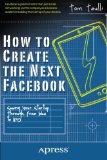Consumer Internet startups
 There is hardly any doubt that 2014 is the year when connected devices – particularly wearables – will go mainstream. Technology tradeshows and media alike are practically bursting at the seams with new products, concepts, and announcements for connected devices.
There is hardly any doubt that 2014 is the year when connected devices – particularly wearables – will go mainstream. Technology tradeshows and media alike are practically bursting at the seams with new products, concepts, and announcements for connected devices.
It’s worth noting that this is quite a special slice of the Internet of Things: this isn’t about the industrial internet, it’s about bringing the IoT to consumers. This is a very different story altogether, a segment with its own opportunities, challenges, and dynamics, one that exists at the intersection of various verticals – think home automation, wearables, connected mobility, personal analytics, health tech. It’s a space where the lines aren’t yet fully drawn, the terminology not yet fully evolved – which is usually a sign of a field that’s moving quickly and innovating. In other words, this is where some truly innovative and interesting stuff is happening.
We see a wide range of startups exploring connected consumer devices, all taking different approaches in terms of business and interaction models. This adds one particular challenge for IoT startups in the consumer space: very much unlike the Internet of Things in the B2B world, for the consumer IoT there is as yet no fully evolved terminology for people to grasp what they are buying into.
An example: the Good Night Lamp, a family of connected lamps by London-based product designer and IoT thought leader Alexandra Deschamps-Sonsino. How should we define it? Is it primarily a lamp? A networked device? A social signifier? Really it’s all of those things, but users won’t necessarily see it that way. The point is, we still lack the vocabulary to describe these innovative products that explore niches that simply did not exist before.
 So startups that are building disruptive, innovative connected devices face two particular challenges:
So startups that are building disruptive, innovative connected devices face two particular challenges:
- Consumers do not yet fully understand what they are looking for, or looking at. As a consequence, investors are hesitant to invest in markets that are not yet fully understood.
- While prototyping connected devices is becoming increasingly easy thanks to open hardware like Arduino and RaspberryPi and IoT-focused cloud computing platforms like BERGCloud, making the move from prototype to large-scale manufacturing is still a huge challenge.
As you can see, these are all first-mover problems: challenges faced by those working on the cutting edge, exploring and defining their field. By definition, that is where startups and inventors live.
I believe that together we can tackle both challenges and help these startups succeed:
- We can help develop an understanding of what the Internet of Things can do for “normal people” by asking ourselves how we can improve everyday products in ways that do not just slap the internet onto an existing product, but enhance the product through connectivity and empower its users. As the consumer market evolves, investors will quickly catch on, too.
- While manufacturing at scale is a huge challenge for startups – particularly if their founders come from a background of developing software or online services – there are players in the market that have a deep understanding of how this works: the so-called ‘Old Industry, ’ from SMEs to large technology and manufacturing companies such as Bosch. By teaming up, both sides can learn from each other and unlock potentially huge new markets.
You might also like
A Look Back At Yahoo's Flickr Acquisition For Lessons Today — TechCrunch
And there wasn't much confidence in consumer Internet startups, as many investors and entrepreneurs still had the dot-com crash fresh in their minds.
AOL Launches Women-Focused Start-up Fund — MarketWatch
75% of consumer internet startups have zero women on the founding team; at enterprise software and hardware startups that number climbs to over 80%.3 And while the fraction of female CS graduates increased in 2013 to 14%, it is still significantly ..

|
How to Create the Next Facebook: Seeing Your Startup Through, from Idea to IPO Book (Apress)
|



